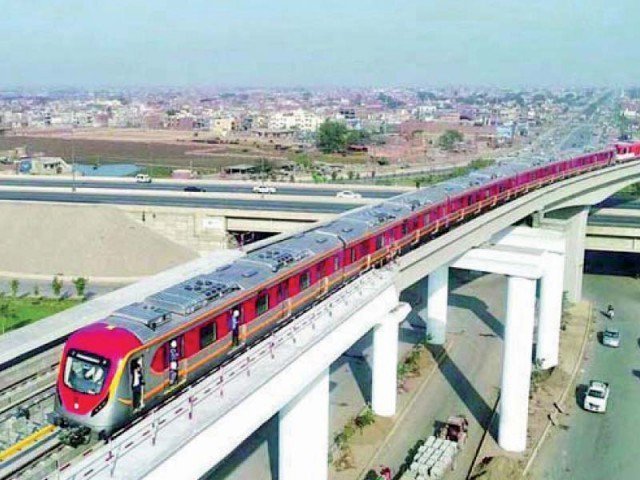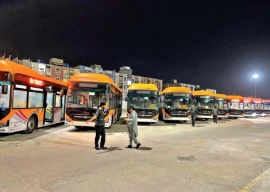
The service will be launched for passengers within the next two months and is being tested daily. Visibly, there is lack of foolproof security arrangements on the OLMT track and stations.
A memorandum of understanding (MoU) is to be signed by the OLMT administration and a private company based on which passengers will be provided security on the stations. The sources revealed that the government had earlier tried to have local police for the security of the train service but the decision could not be implemented.
On the track: Orange Line train begins test runs
Now, a private security firm will take up the task. The security personnel of the contractor will be deployed at the metro stations. Interestingly, the measure is yet to be finalised while the administration is still clueless about plans on any mishap or emergency.
The existing rescue services ie Rescue 1122 do not have the resources and capacity to cater to needs for dedicated service for OLMT.
Currently, a team of Pakistani and Chinese specialists is handling the operation of the train. Arrangements are also being made for the delivery of tickets to the passengers at all the stations.
The transport department had recommended a high ticket price for the train while the administration of the Orange Line made it clear that the fare from one station to another will be Rs30 in line with the fare of Metro Bus service so that common people could drive maximum benefit from the service. Due to high fare, many people would not be able to avail the service, the administration had argued.
Punjab Mass transit Authority General Manager Ozair Shah confirmed that the private security personnel will be deployed at 27 stations of the OLMT and the contract has been outsourced.
He said an MoU will be signed soon. He also pointed out that the services of Rescue 1122 will be availed in case of emergencies. He said these measures would help in the services of the OLMT. Apart from this, a Chinese company has been awarded a contract for eight years under the Public Procurement Regulatory Authority (PPRA) rules for operation and maintenance of the OLMT.
The OLMT will be supplied with power from eight grid stations, but so far only six grid stations have been supplied, which is sufficient. Besides, these grid stations will be operated in such a way that alternative supply of power from the second grid station is provided if there is load-shedding on one grid station.
The train will run at a top speed of 80 kilometres per hour. However, the speed will be slowed down while crossing 11 historic buildings in the city. These historic places included Chobarjee, Badu Kawa, Shalimar Bagh, Lakshmi Chowk, GPO and the Lahore High Court buildings.
Sources said a sum of Rs1.62 billion has been obtained from Axim Bank of China from which Rs1.31 billion have been spent so far while the remaining amount will be utilised for civil and electric works as per the administration.
The sources also revealed that the funds were underutilised while the cost was being scrutinised with more checks and balances.
Sindh govt cancels procurement of Green Line buses
At present, the locomotives of the OLMT will run by the Chinese engineers and drivers, but after getting the training and licenses, Pakistani drivers will operate the train. The 27-kilometre track from Dera Gujran to Ali Town will be covered in such a way that the maximum number of people would benefit from the service.
The train is will start its service in the morning after Fajr prayers and continue until midnight. The government is reviewing recommendations in this regard and the final schedule will be announced before the end of the test trial.
Published in The Express Tribune, January 2nd, 2020.























COMMENTS
Comments are moderated and generally will be posted if they are on-topic and not abusive.
For more information, please see our Comments FAQ